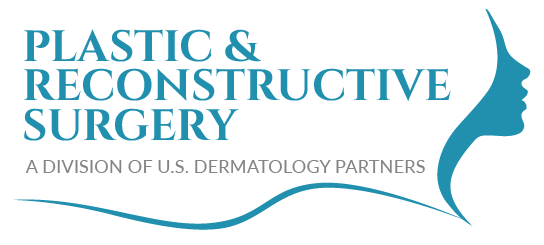Facelift for Facial Paralysis
Facelifts are some of the most widely known cosmetic surgery procedures, and they are often recommended to achieve a range of treatment goals. In addition to improving facial appearance, facelifts can also be utilized to restore more natural facial symmetry and natural resting position for those with facial paralysis by lifting sagging structures. On this page, you can learn more about facelift for facial paralysis. You can also contact our team at Plastic and Reconstructive Surgery, a Division of U.S. Dermatology Partners, to schedule a consultation. Our knowledgeable surgeons will be happy to discuss all of your treatment options for facial paralysis, including facelift.
What Is a Facelift?
A facelift is a cosmetic surgery procedure used to lift facial structures and improve appearance. However, it is also a popular solution for people who struggle with long-term facial paralysis and changes in facial symmetry caused by Bell’s palsy and other sources of facial paralysis. There are several different approaches to facelift that involve adjusting facial tissues and structures at different levels that range from pulling back just the outer layers of skin to adjusting deep musculature and structural tissues. Depending on the patient’s specific needs, the cosmetic surgeon will recommend the best option to deliver the desired results, restoring natural appearance and symmetry.
Benefits of Facelift for Facial Paralysis
The most important benefit of a facelift for facial paralysis is allowing the patient to reclaim their sense of self and experience greater confidence again. Additionally, facelifts help to counteract other negative effects of facial paralysis, including difficulty speaking, eating, and making facial expressions. Facelifts are also versatile, which means the individual’s facelift surgery plan can be customized to target exactly the areas that need to be addressed while minimizing the impact on areas of the face that are not negatively impacted by facial paralysis.
Recovery After Facelift for Facial Paralysis
Following a facelift, the cosmetic surgeon will place bandages and provide instructions for changing out coverings at home, or they will schedule a follow-up appointment to remove and replace the bandages and dressings. For the first week after treatment, you’ll likely notice bruising, swelling, and discomfort that can be managed with over-the-counter pain medications. Between ten days and two weeks after surgery, you can return to work. Make sure to get plenty of rest during this time to allow your body to heal. Your surgeon will let you know when it’s safe to resume other daily activities. When in doubt, pay attention to your body’s response, and forego any activities that cause bleeding, swelling, or pain.
Risks Associated with Facelift for Facial Paralysis
Surgical procedures all have complications, we have the necessary training and experience to mitigate the vast majority of surgical risks. Even with the added complexity of addressing facial paralysis, an experienced facial plastic surgeon can safely provide facelift procedures.
While our trusted surgeons will work to provide the safest treatment, there is still a possibility that patients can experience adverse effects like:
- Infection
- Scarring
- Excessive bleeding
- Worsening swelling and pain
- Skin numbness around the surgical site


